When I visited Zaragoza, I didn’t just wander the modern streets—I ventured beneath them into the ruins of Caesaraugusta, a Roman city hidden under everyday life. Walking below Zaragoza, I found the ancient forum, grand theater, and public baths, still standing after all these centuries.
It felt like time-traveling right under the busy city squares.
Most travelers don’t realize there’s a whole Roman world right below their feet in Spain’s Aragon region. Exploring these underground sites gave me a new perspective on the history of Zaragoza and Roman Spain.

If you’re curious about what lies beneath today’s city, you’ll want to see how Caesaraugusta’s secrets are still being uncovered.
Walking Through Caesaraugusta: Discovering Zaragoza’s Ancient Heart
Exploring Zaragoza’s underground world brought me face-to-face with centuries of Roman history. The city’s Roman ruins aren’t just artifacts—they show how the Iberian Peninsula changed with Roman urban development, architecture, and daily life.
Mapping the Forum, Theatre, and Baths Underground
Beneath the streets of modern Zaragoza, I followed the mapped route of ancient Caesaraugusta. The Forum Museum, hidden under La Seo Plaza, displays what’s left of this bustling Roman center.
Walking between upright columns and stone merchant stalls, I could almost feel the pulse of a city that once controlled a key part of the Iberian Peninsula.
Just a short walk away, the Caesaraugusta Theatre opened up below a busy square, revealing rows of marble seating and a broad stage. The scale really hit me—it showed just how much theater mattered to Roman citizens.
A little further, I toured the Roman Baths Museum. The mosaics, stone pools, and heated benches highlighted Roman engineering and the social role of bathing in daily life.
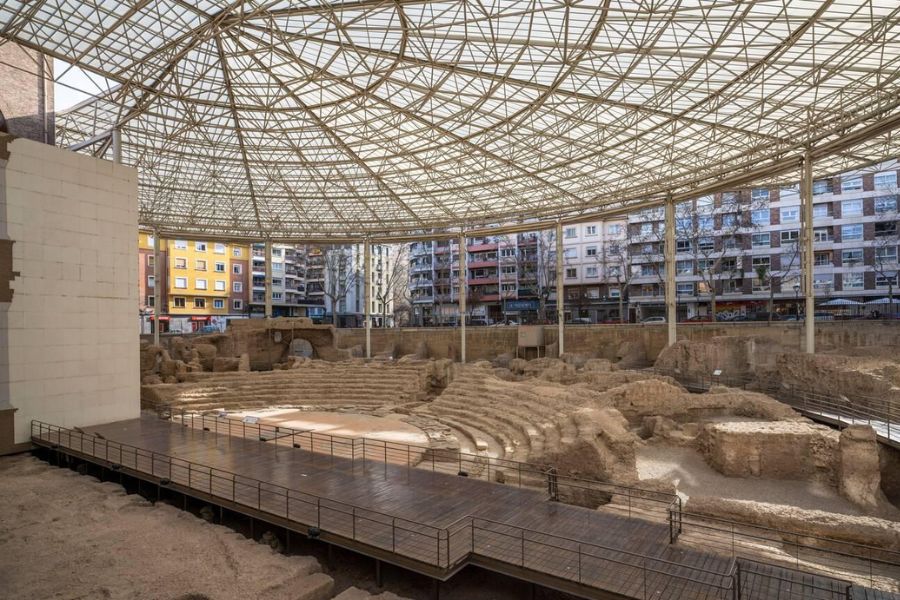
Clear signage links each site. Visitors can follow the “Caesaraugusta Route,” moving from the forum to the theater, to the baths, and even to the river port museum if you’ve got time.
Museum models and restored artifacts help bring this ancient city back to life, right below Zaragoza’s lively present.
Urban Development From the Roman Empire to Today
Caesaraugusta’s original city plan shaped Zaragoza’s cityscape. Romans laid out their city with a grid of streets, public spaces, and grand buildings—most of them now hidden under later layers.
Whenever I looked down at glass panels set in the sidewalk, I glimpsed the original Roman foundations peeking through.
After the Romans, Visigothic, Moorish, and Christian rulers kept building, layering new streets and plazas above Roman ones. Zaragoza’s old town still follows the ancient pattern in places.
La Seo Cathedral and main boulevards map onto earlier Roman roads.
For travelers, strolling Zaragoza becomes a journey through urban development. Modern cafes and shops line walkways that once crossed a Roman marketplace or theater courtyard.
It’s a reminder—city life is always building on the past.
Interpreting Literary and Archaeological Sources
To piece together Caesaraugusta’s story, I leaned on a mix of written records and physical ruins. Ancient Roman texts, inscriptions, and coins found on-site describe everyday life and imperial events.
Archaeological study fills in gaps where words faded. Fresco fragments, pottery, and shop foundations show how Romans adapted architecture to their needs in this part of the Iberian Peninsula.
Interactive museum displays translate old Latin texts and show maps side-by-side with real ruins.

I found that using both kinds of sources—books and bricks—offered a fuller view. Exploring the museums, I appreciated how modern archaeology works to reconstruct Caesaraugusta from what was left behind and what was once written.
Inside the Forum: Rome’s Power Beneath Modern Streets
Walking under Zaragoza’s busy streets, I found myself surrounded by the ruins of ancient power. Below the city, Rome’s influence still lingers, where political life and material culture tell the story of Caesaraugusta.
Political Role and Social Status in Caesaraugusta
The forum of Caesaraugusta once served as the political and social heart of Roman life. Local magistrates exercised authority and enforced Roman law, like the lex Irnitana, shaping daily life.
These officials, often chosen from wealthy local families, moved through the cursus honorum—Rome’s ladder of political offices.
Standing in the shadow of ancient columns, I could almost picture gatherings of citizens for debates and announcements.
Public buildings and open plazas provided space for discussions about laws, court rulings, business deals, and celebrations.
For visitors today, the outlines of the basilica, temples, and meeting spaces still show the order and structure of Roman society in Caesaraugusta.
Epigraphy, Coinage, and Material Culture Artifacts
Exploring the excavated rooms, I came across fragments of inscriptions (epigraphy) that once honored local leaders and marked civic achievements. These texts reveal who funded statues or designed city buildings.
Roman coins—sometimes featuring emperors or local symbols—help trace the city’s place in Rome’s vast economy.
Material culture from Caesaraugusta—like pottery pieces, marble tiles, and everyday items—shows the blend of local and Roman styles.
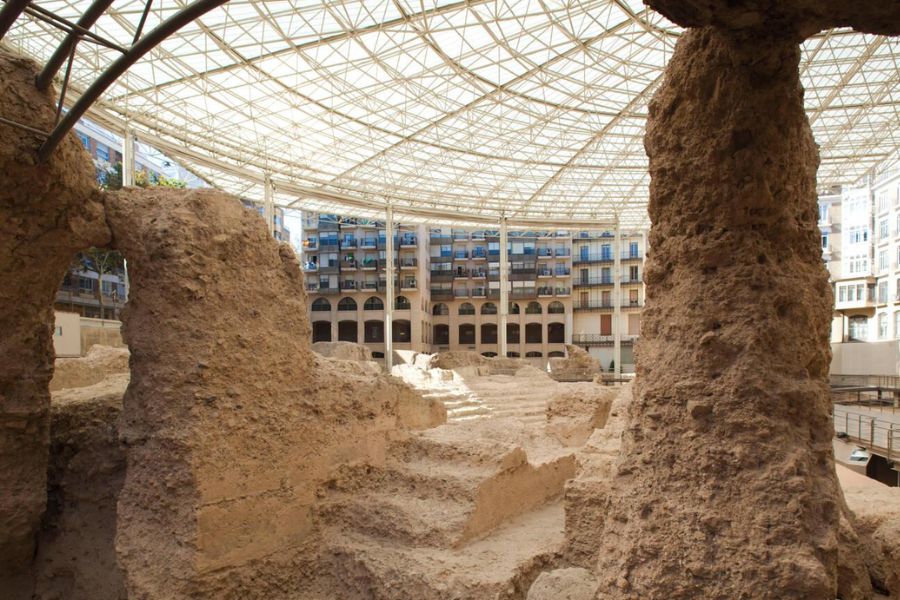
Seeing these artifacts in person grounded me in the everyday reality of Roman civilization.
Maps, displays, and a few restored objects let me connect what I saw with the wider story of Roman Spain and the power that once pulsed under my feet.
Exploring the Theatre: Entertainment and Everyday Life
Walking into the ancient Roman theatre of Zaragoza, I could sense how entertainment and daily routines once mixed here.
The theatre wasn’t just a place for plays—it was a lively center where people met, talked, and connected with the wider Roman world.
Social History and Roman Society at the Theatre
As I stepped onto the worn stone steps, I realized theatres in Roman cities like Caesaraugusta were more than just entertainment venues.
People from all walks of life came together here—senators, merchants, soldiers, and locals. Sitting side by side, they shared laughter, stories, and the latest news.
The atmosphere during performances must have been buzzing. Audiences gathered not just for plays, but also public speeches and announcements.
The theatre became a stage for both drama and civic life. The design allowed everyone to see and hear, showing the Romans valued a shared social experience.
Street vendors often lined the entrances. I could almost imagine the smell of food and the sound of sellers calling out.
Ceramics found by archaeologists hint at snacks and drinks sold to the crowds, adding a layer of daily life you can almost still feel today.
Trade Routes, Connectivity, and Urban Network
The location of the theatre wasn’t random. Caesaraugusta stood at the meeting point of Roman roads linking Italy with Hispania’s key cities.
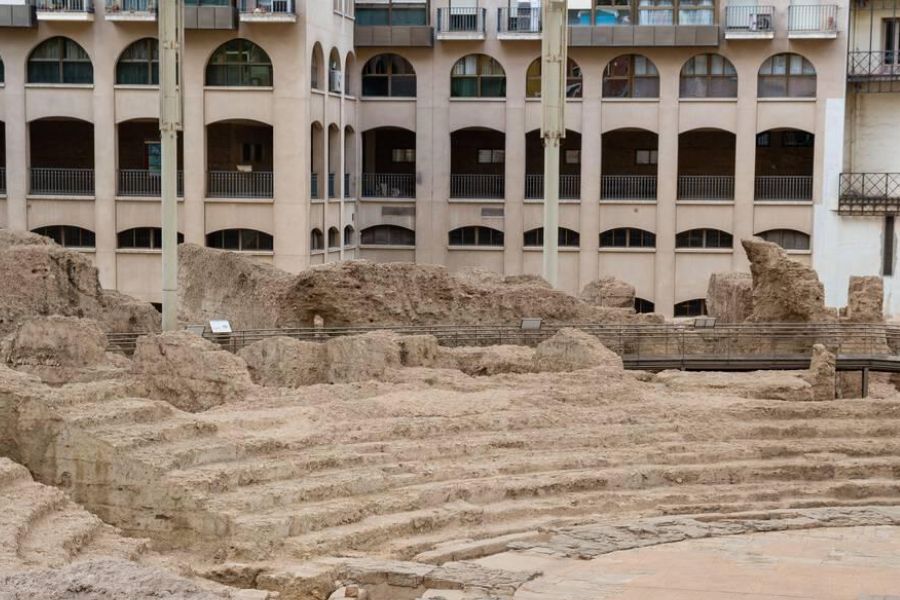
The theatre itself was built close to the bustling forum and river port.
Trade Connections Table:
| Trade Goods | Where From | How They Arrived |
|---|---|---|
| Olive oil | Southern Spain | River & road |
| Ceramics | Gaul, North Africa | River port, land routes |
| Wine | Italy, Tarragona | Road, port |
This urban network let citizens see goods and people from all over the empire. Travelers and traders who visited the theatre brought new fashions, ideas, and news.
Ceramics on display in the museum come from distant regions, proving Zaragoza’s ties across Roman trade routes.
Being at the crossroads made the city vibrant—and its theatre a true hub of Roman life.
Unveiling the Public Baths: Rituals, Religion, and Roman Daily Routine
Descending beneath Zaragoza’s modern streets brought me face-to-face with the Roman baths of Caesaraugusta. These ruins hold clues about ancient rituals, religious beliefs, and how daily life mixed with politics and changing traditions.
Religious Policy and Early Christian Architecture
Inside the public baths, religion was never far away. In Roman times, religious policy shaped every aspect of daily life—even something as simple as trimming a beard or visiting the steam room.
Shrines dedicated to Roman gods like Minerva and Apollo once stood in quiet corners. Small altars and reliefs meant bathers could give thanks or seek protection before entering the pools or frigidarium.
As Christianity spread, these sacred sites began to change. Some areas were repurposed.
Early Christian symbols and architecture emerged, sometimes built right on top of older pagan spaces.
Standing there, I spotted stonework that hinted at Christian gatherings, showing how faith was quietly practiced even before it became the empire’s official religion.
Pagan Revival, Statues, and Changing Traditions
For a brief time, a wave of pagan revival swept the empire. The public baths saw new statues and restored images of gods placed among their columns and mosaics.
I passed what remains of these statues—weathered but still powerful.
Bold carvings of Dionysus, Venus, or Mercury once greeted visitors at the entrance. These pagan statues were as much about identity as decoration, signaling the city’s loyalty to old traditions during periods of cultural change.
Even as Christian influence kept growing, many families clung to older rituals. The baths became a place where old and new beliefs mixed.
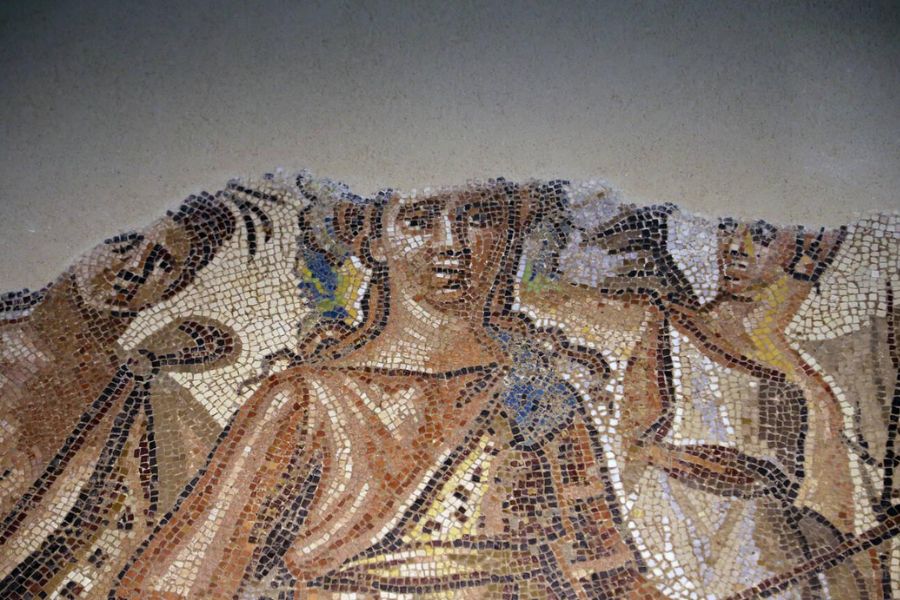
There, the clash of traditions played out not only in artwork but in the daily routines of everyone from merchants to politicians.
Beyond the Ruins: Zaragoza and the Legacy of Roman Spain
Beneath Zaragoza’s lively plazas and twisting streets, the layers of Roman history shape the city’s character even now.
Walking these routes, I found the stories of empire, war, and transformation left their marks, connecting ancient Caesaraugusta to today’s Spanish identity.
Late Antiquity, Visigothic Kingdom, and Successors
After the fall of Rome, Caesaraugusta didn’t just vanish. In late antiquity, daily life continued, but power shifted.
By the early 5th century, the Visigothic Kingdom took control, making the old Roman city a frontier zone. Latin and local dialects, influenced by Aramaic and others, mingled in markets and churches.
Roman buildings were repurposed. Public baths and forums might become homes or churches.
The administrative heart changed, as Visigothic rulers brought their own government systems, but the city’s Roman street grid—and some laws—remained part of daily life.
Later, Zaragoza became known as Saraqusta under Islamic rule. The famous Aljafería palace still recalls that medieval period, built atop old Roman roads and stones.
Roman Roads, Military Affairs, and Empire Connections
Roman Zaragoza sat along important roads linking the Iberian Peninsula to the Roman Mediterranean. Walking the old city grid, I realized it matched routes used by merchants, Roman military officers, and travelers heading for distant cities like Tarraco or Emerita Augusta.
These roads kept things moving. Troops moved quickly, news and goods traveled faster, and Spain stayed connected to the Roman Empire.
Government and administration traced their operations through these very streets.
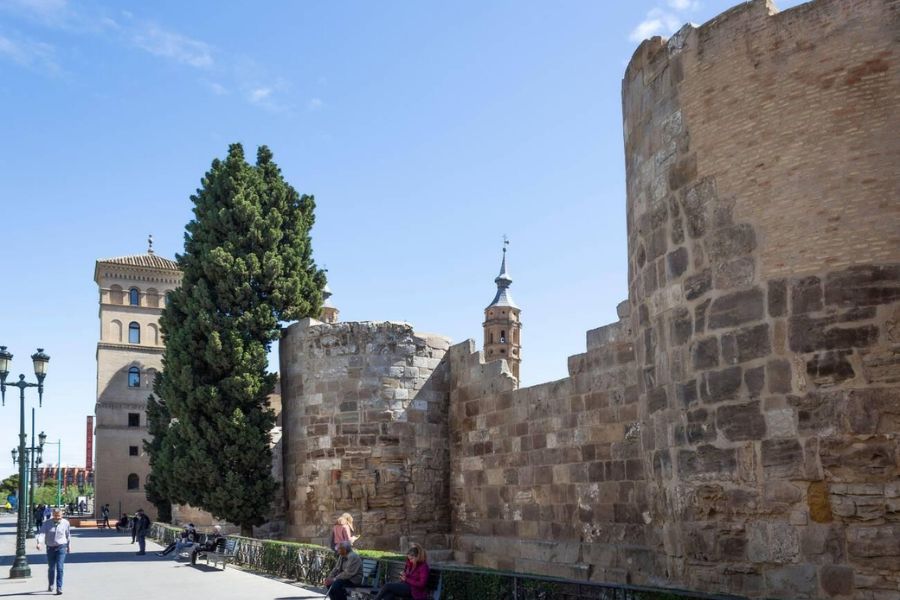
Roman milestones, still seen by the curious traveler, mark ancient distances. Their weathered Latin inscriptions echo ties that once united this corner of Spain to emperors far away.
Tables like this one made it easy for me to spot some of the main connections:
| Ancient Road | Connected Cities | Purpose |
|---|---|---|
| Via Augusta | Zaragoza-Tarragona | Trade, Military |
| Via Heraclea | Zaragoza-Ebro Valley | Movement of goods |
Modern Day Zaragoza and Preservation Efforts
Modern Zaragoza really knows how to celebrate its Roman roots. The museums along the Caesaraugusta Route actually let you walk right over the old theatre, forum, port, and baths—just beneath glass walkways and open plazas.
You won’t find these sites tucked away somewhere—they sit right in the heart of the city’s daily life.
I’ve seen how preservation efforts try to strike a balance between tourism and research. Informational panels and guided tours pop up everywhere, helping people connect the dots between ancient Roman engineering and the way Spanish cities look now.
You’ll spot bilingual signs, and sometimes digital reconstructions, which honestly make it a lot easier to picture what stood here centuries ago.
Local festivals and school trips regularly fill these ancient spaces with noise and laughter. That real, everyday connection keeps Roman Zaragoza alive—it’s not just a relic, but a living piece of Spanish heritage.

